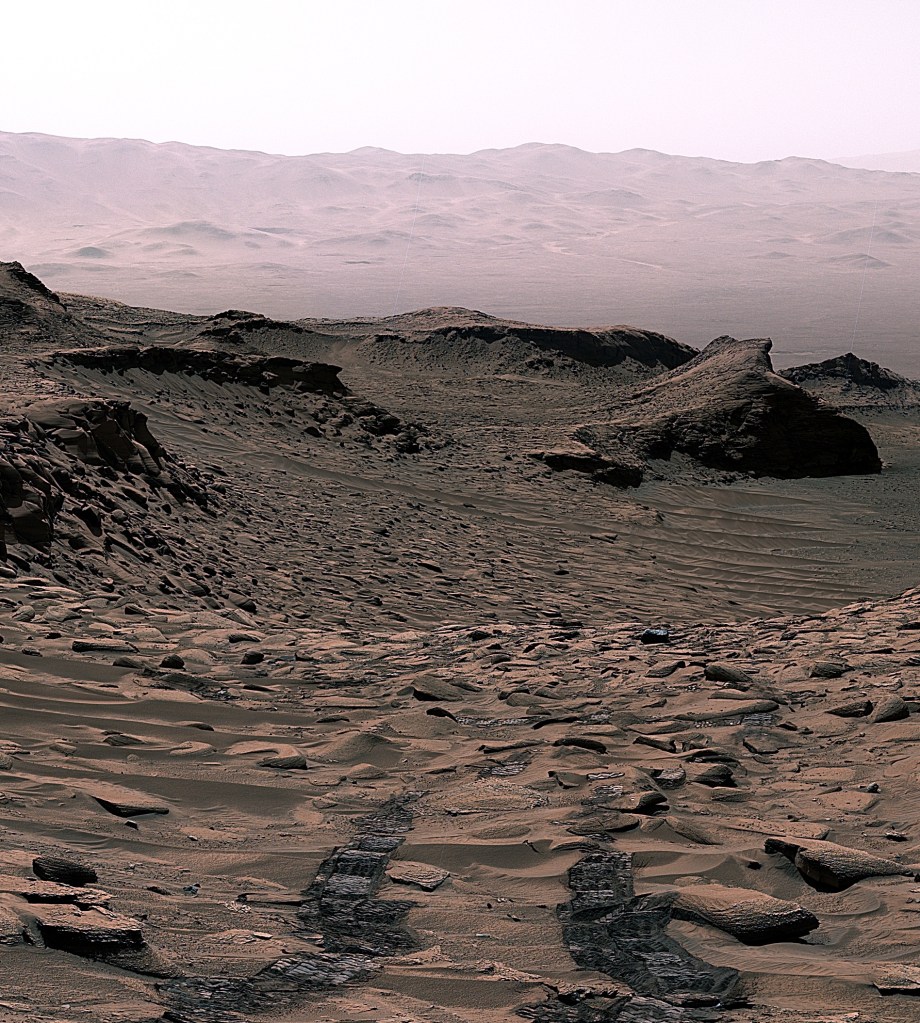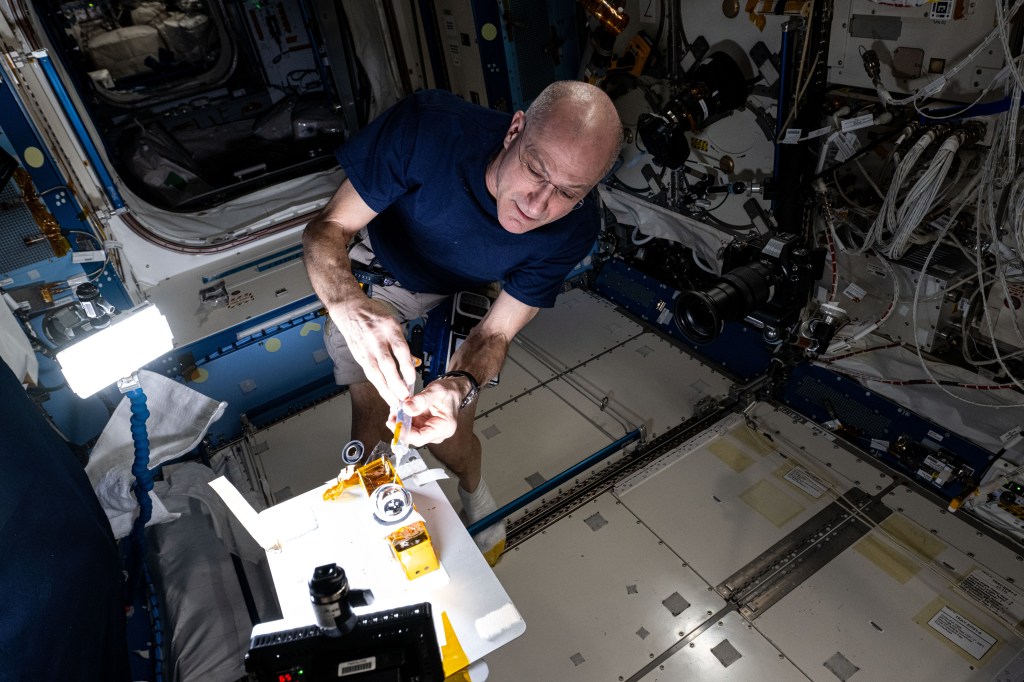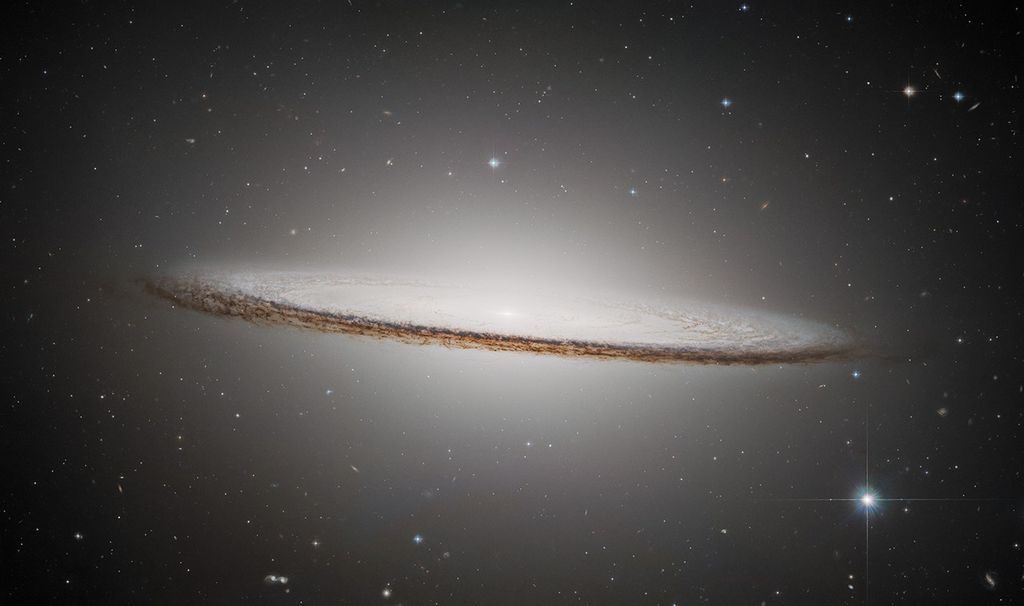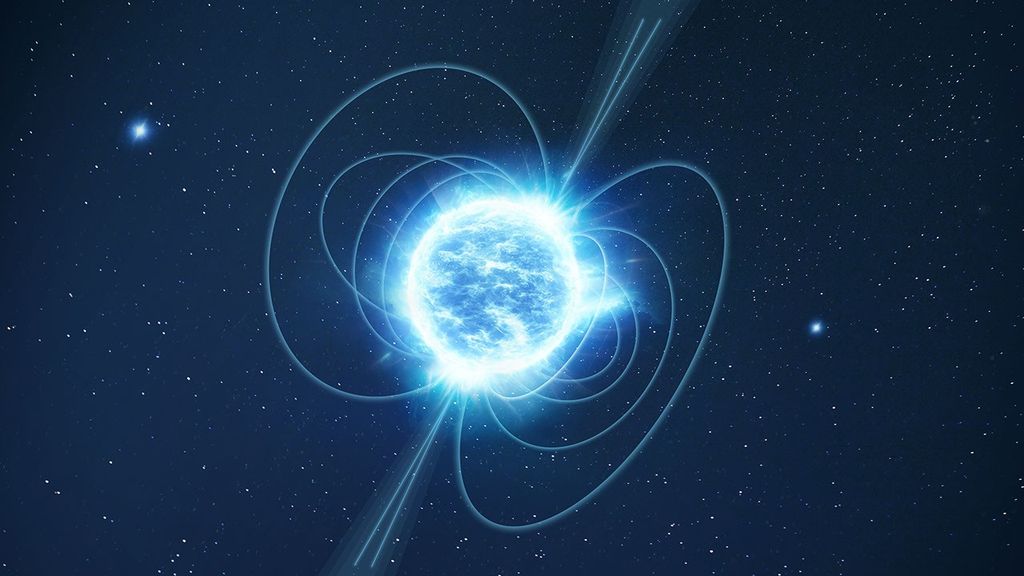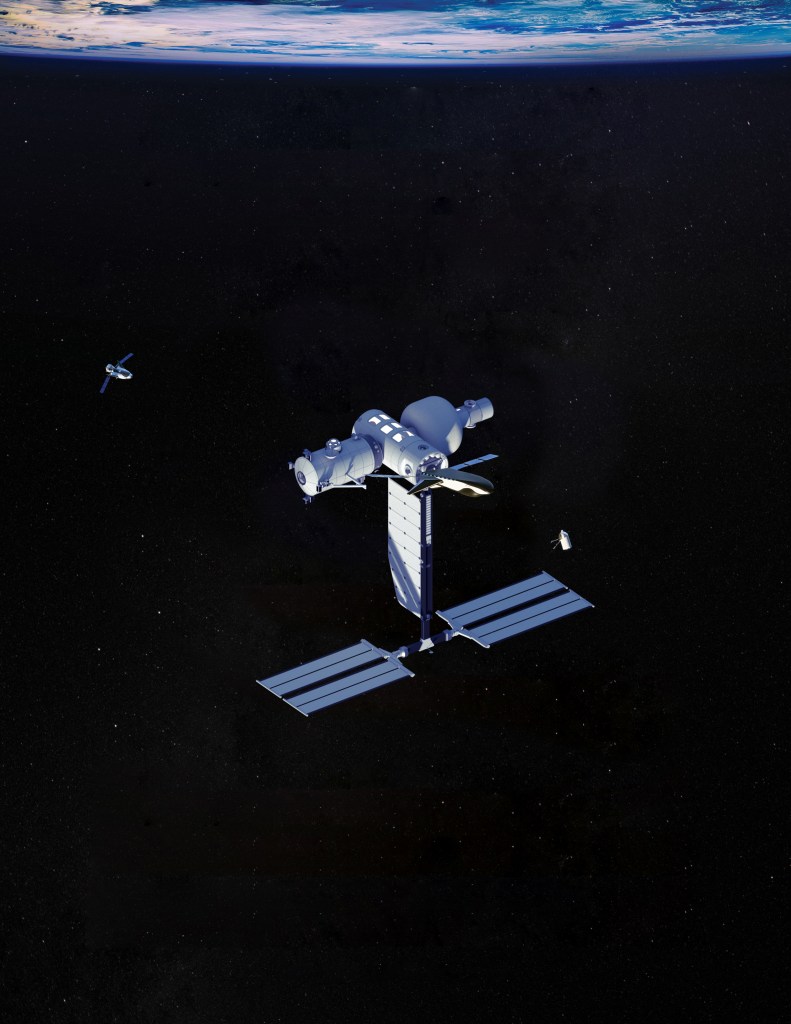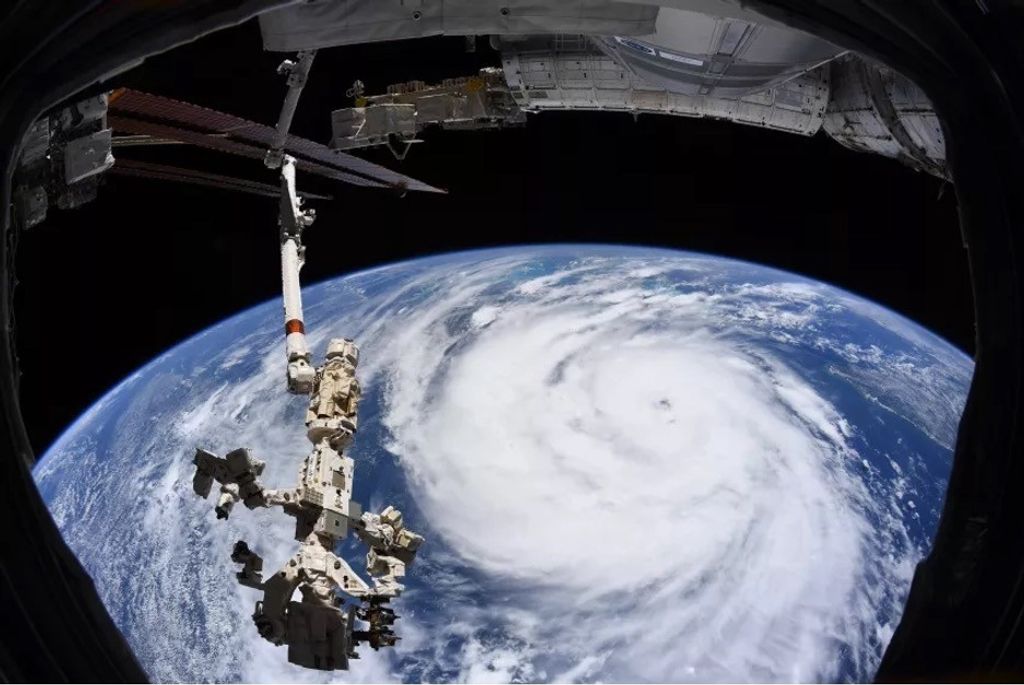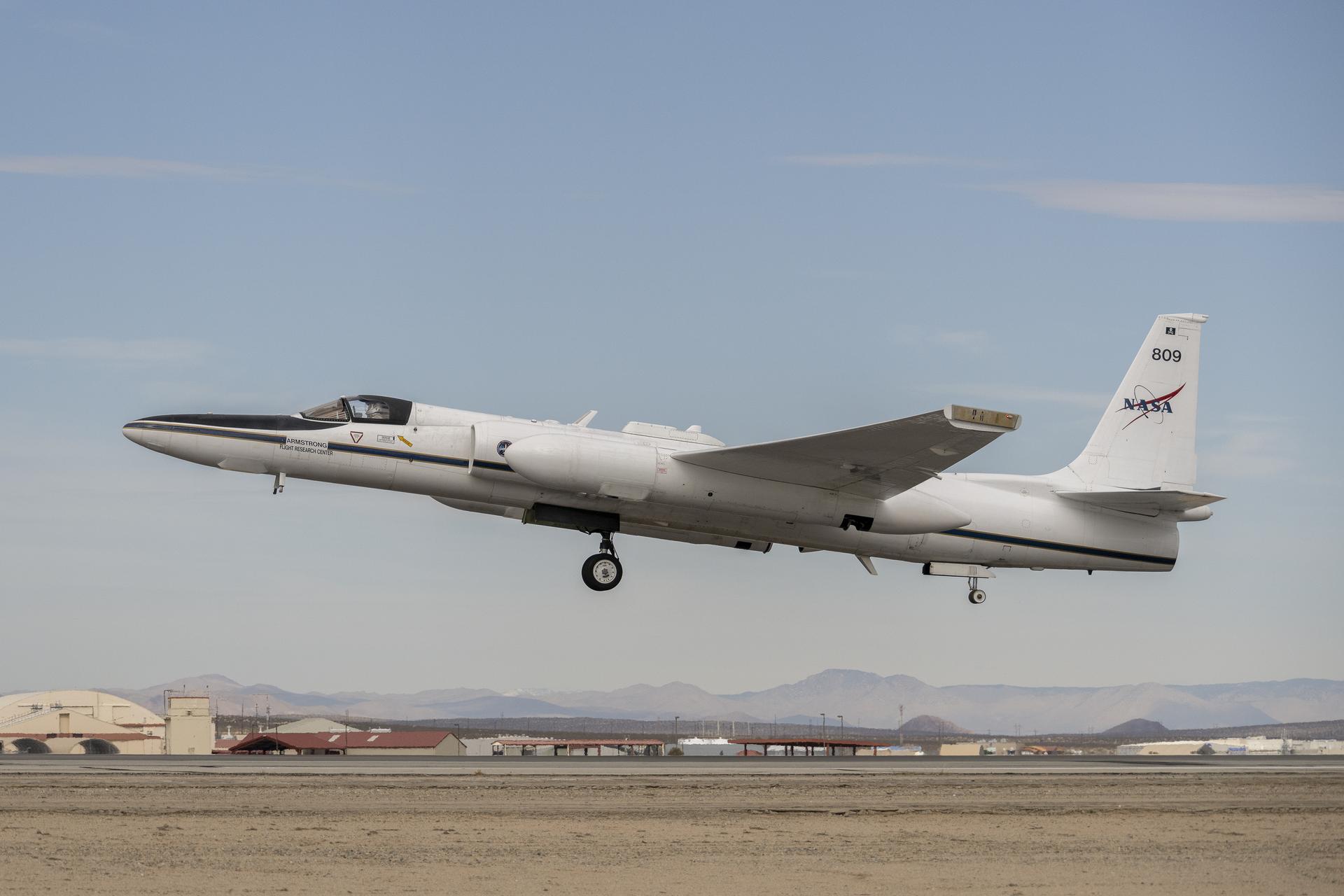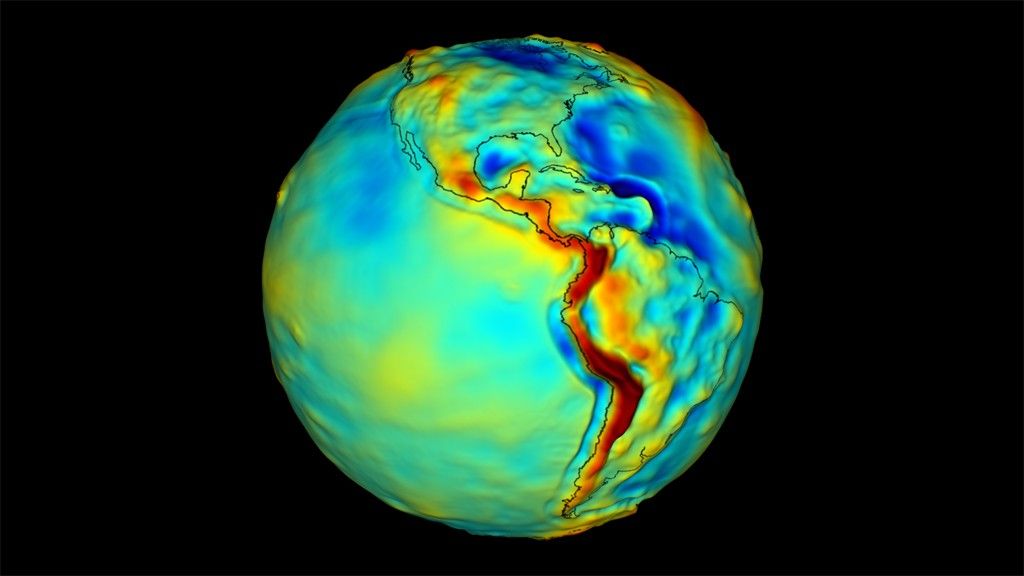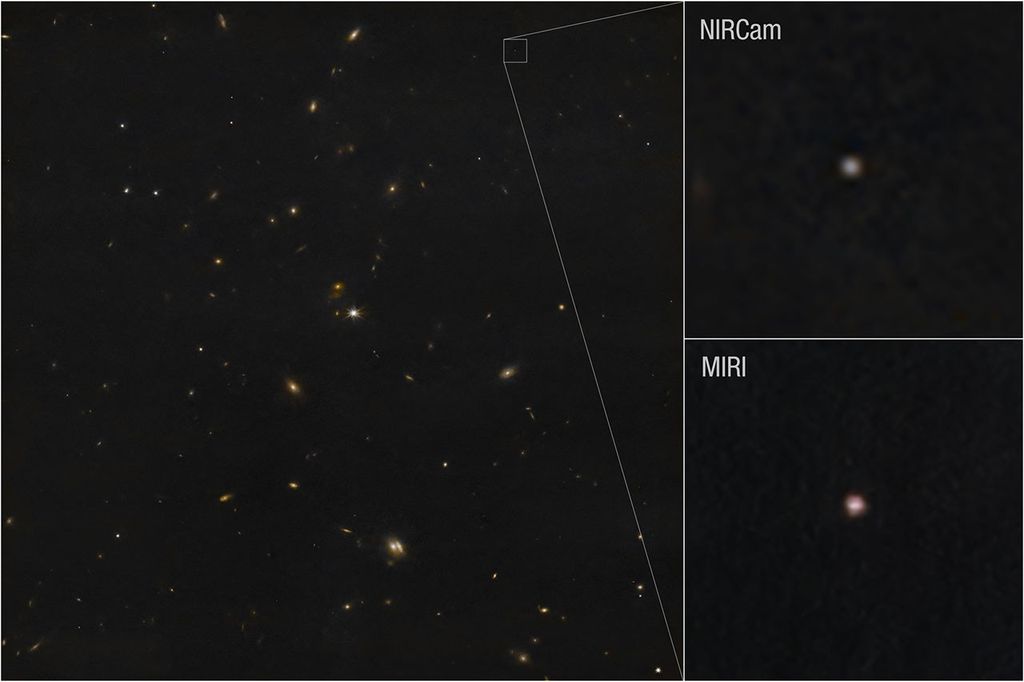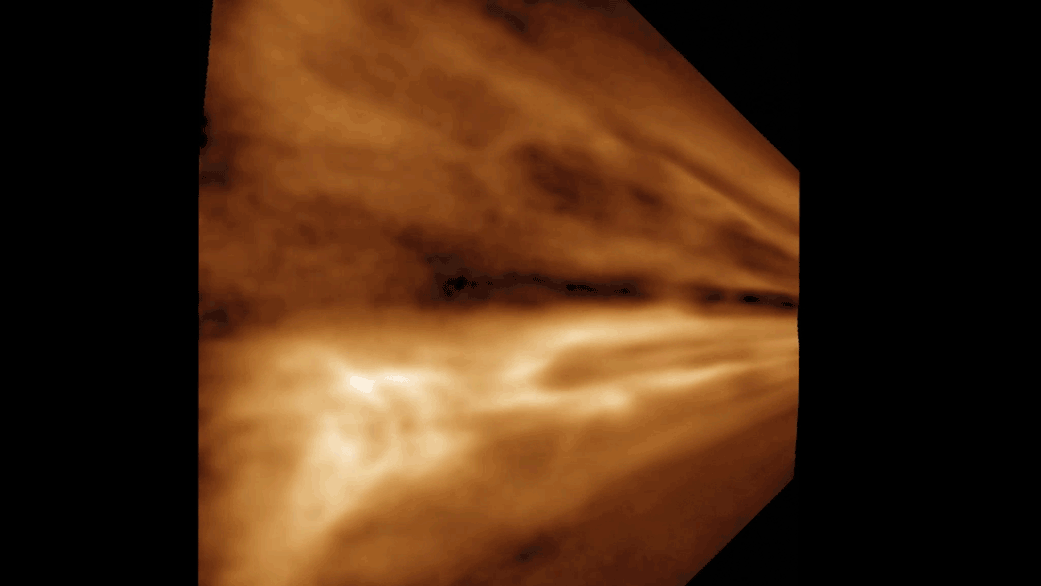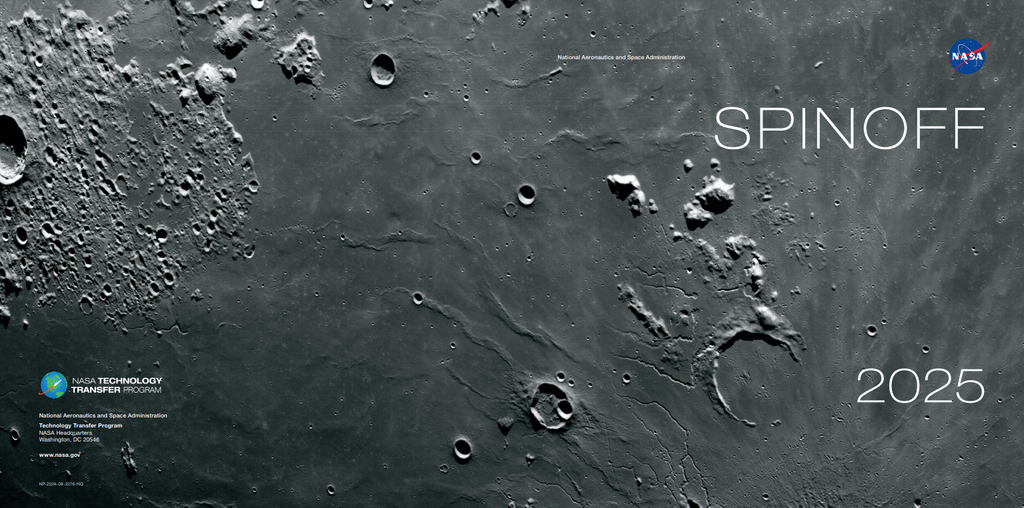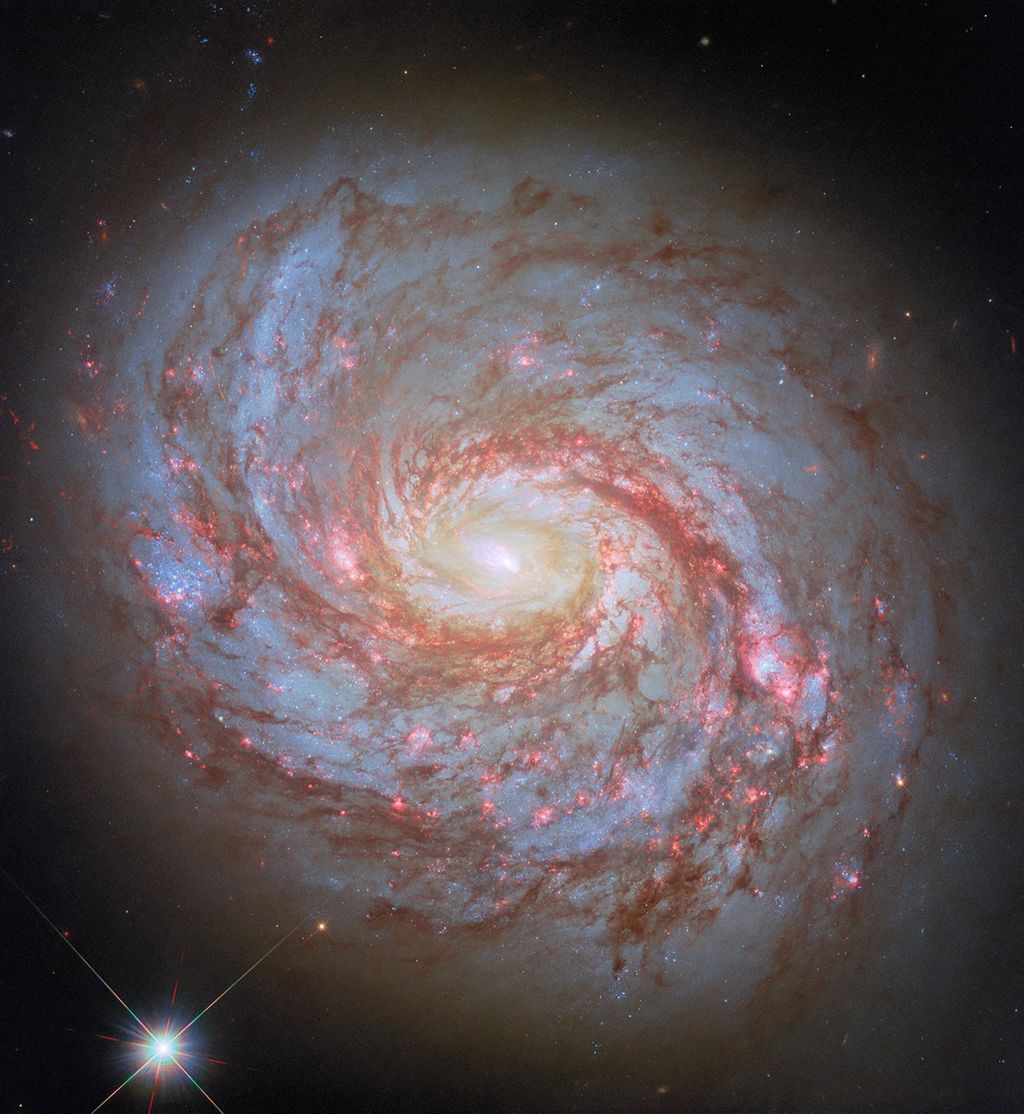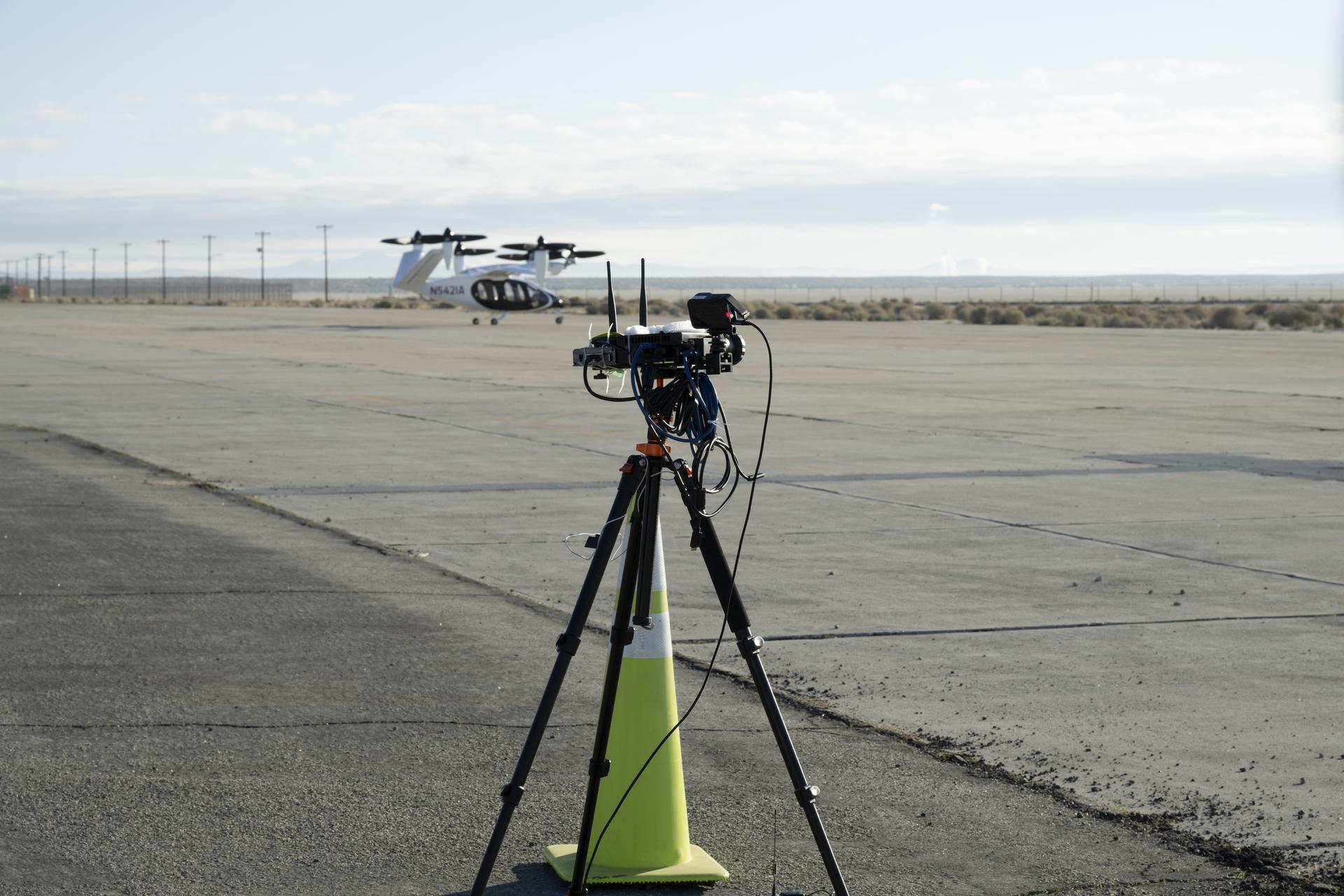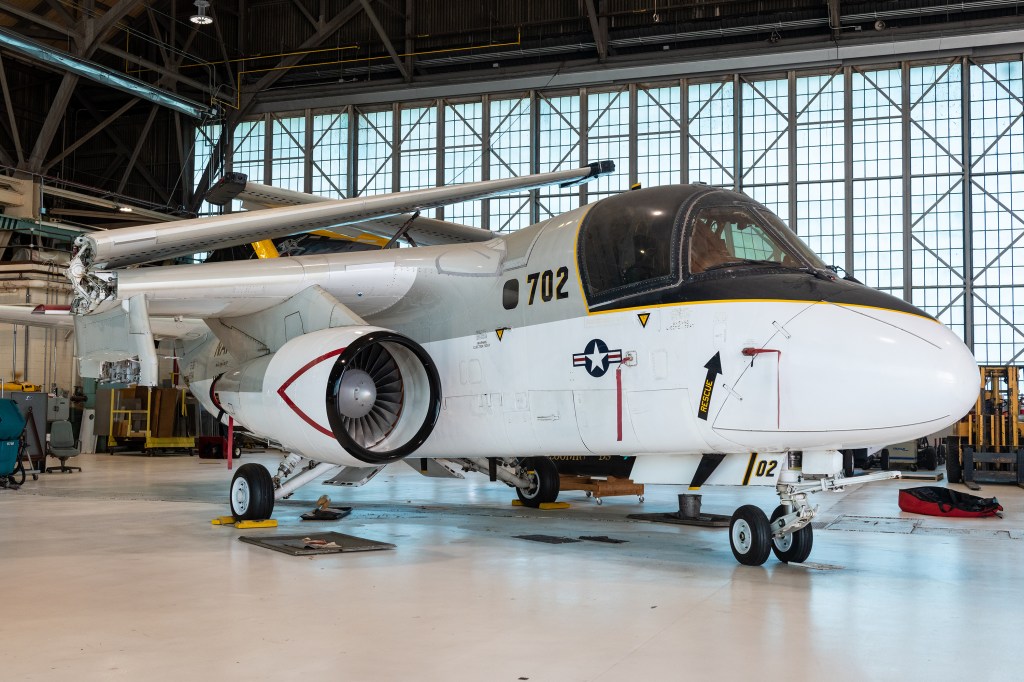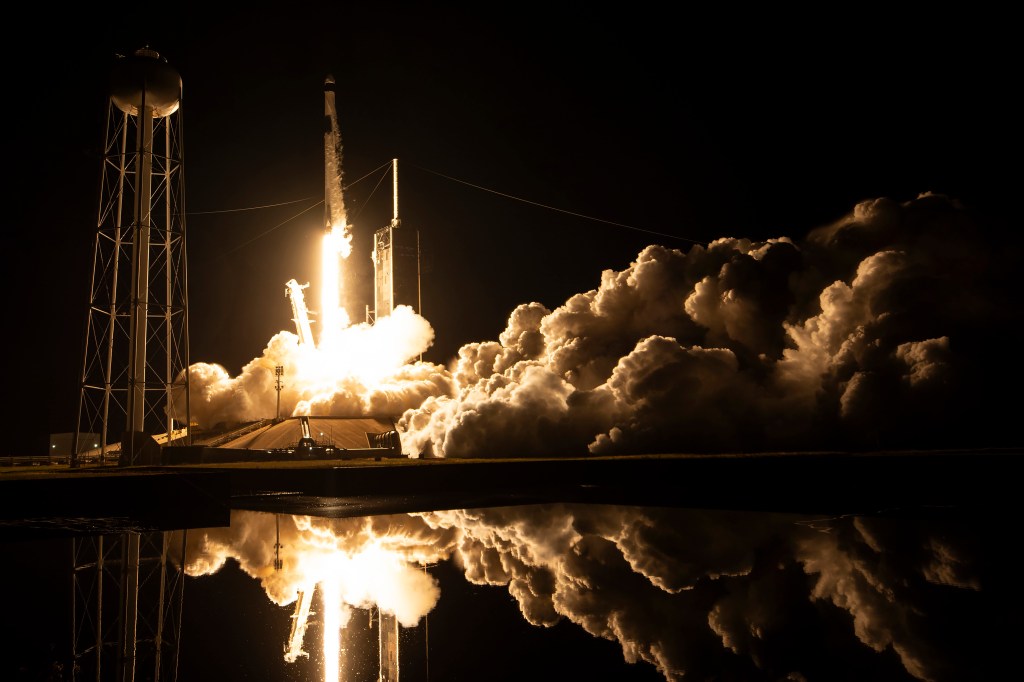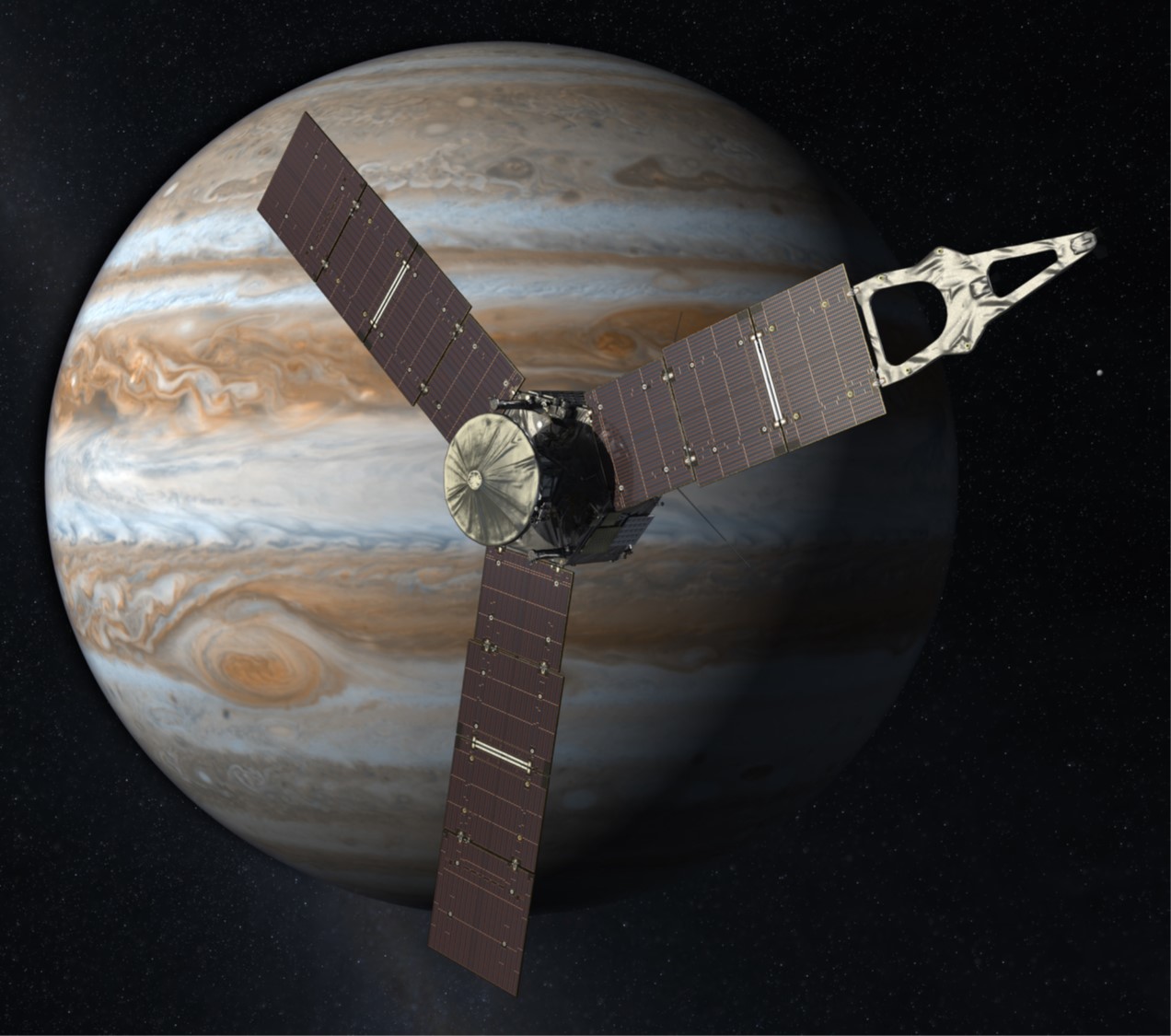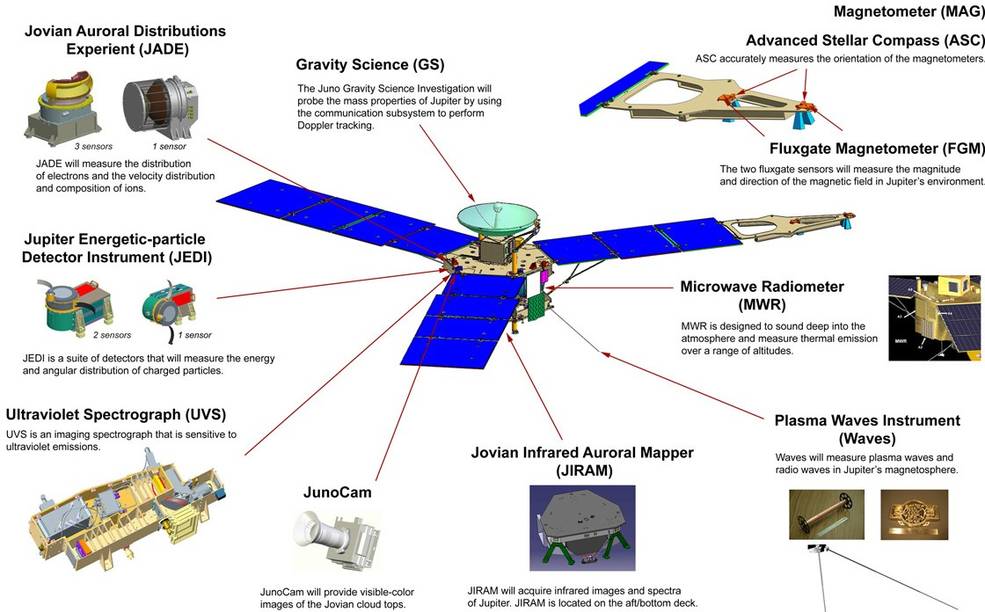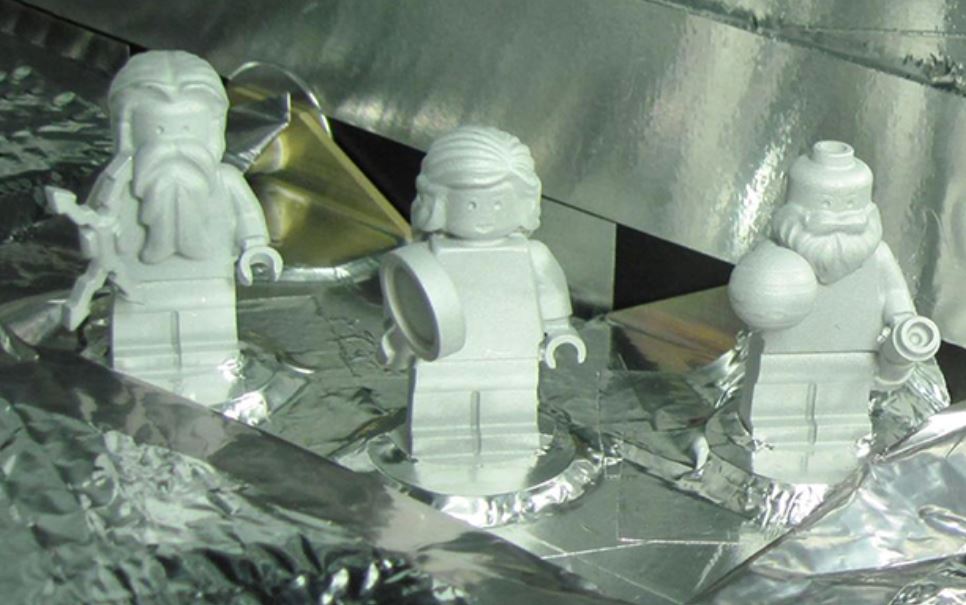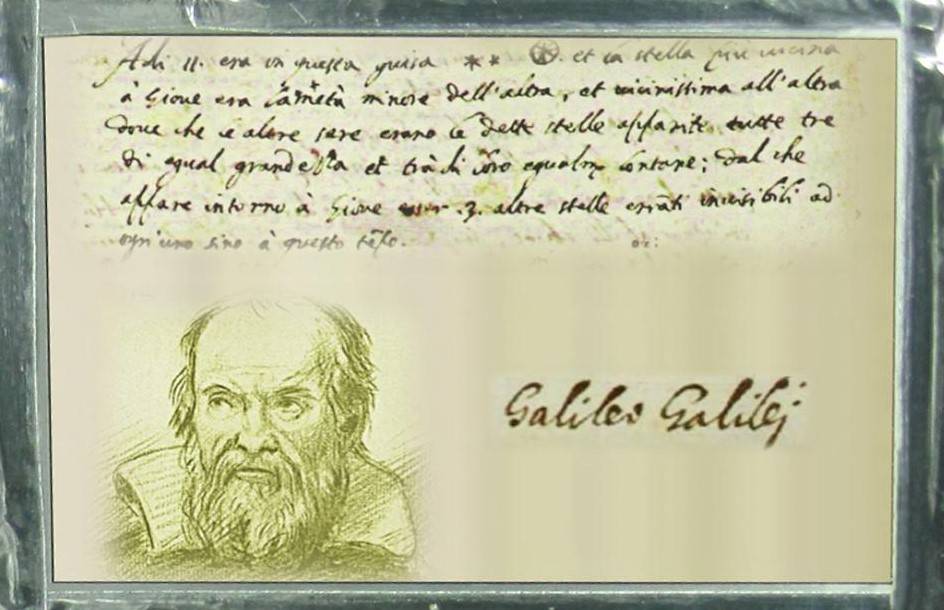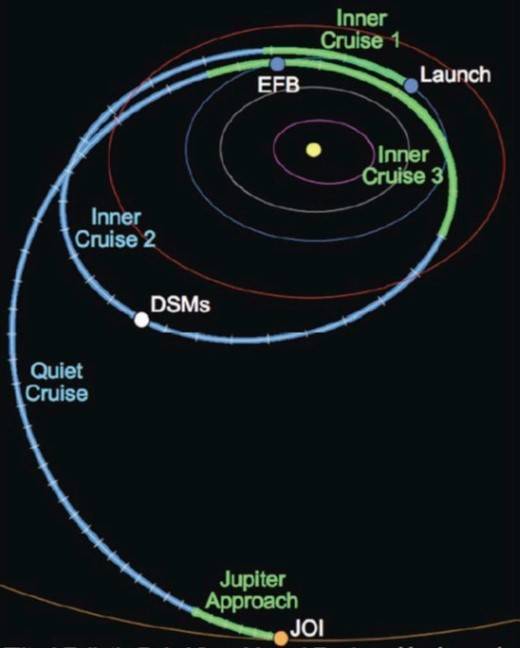On Aug. 5, 2011, NASA’s Juno spacecraft launched on a five-year interplanetary journey that took it to the giant planet Jupiter. NASA’s Jet Propulsion Laboratory in Pasadena, California, manages the Juno mission and its operations. The goal of the spacecraft was to enter orbit around the planet and use its suite of scientific instruments and cameras to observe Jupiter’s atmosphere, gravity and magnetic fields. The understanding of the planet’s properties can reveal clues about its origins and evolution. Juno arrived at Jupiter in July 2016 and entered an elliptical polar orbit around the planet. It continues its observations of the largest planet in our solar system, returning spectacular images of the gas giant, even to this day.
Jupiter is a gas giant planet so large that all other objects in the solar system, except the Sun, could fit inside it. With 79 moons orbiting around the planet, the Jovian system is like a mini solar system. Even though Jupiter is one of five planets in our solar system visible to the naked eye, its moons stayed undetected until 1610 when Italian astronomer Galileo Galilei observed Jupiter’s four biggest moons using his homemade telescope. Today, they’re referred to as Galilean satellites, named after their discoverer. Over the centuries, progressively better telescopes, and later other instruments, uncovered some of Jupiter’s mysteries, such as its Great Red Spot and multicolored bands in its atmosphere. Our knowledge of the planet increased manifold with the first spacecraft flyby encounters in the 1970s, (Pioneer 10 and 11 and Voyager 1 and 2) especially with the Galileo orbiter and atmospheric probe in the 1990s and 2000s. Several other spacecraft (Ulysses, Cassini-Huygens, and New Horizons) made observations of the giant planet while using its gravity to speed them to other destinations in the solar system. Unlike previous spacecraft that have visited Jupiter, Juno relies on solar rather than nuclear power, carrying a trio of the largest solar panels ever placed on an interplanetary spacecraft.
Schematic illustration of Juno and its suite of scientific instruments.
To perform its observations, Juno carries a suite of nine instruments.
- Microwave Radiometer (MWR): To measure the abundance of water and ammonia in the deep layers of Jupiter’s atmosphere and to obtain a temperature profile of the atmosphere.
- Jovian Infrared Auroral Mapper (JIRAM): A spectrometer to provide images of auroras in Jupiter’s upper atmosphere.
- Magnetometer (MAG): To map Jupiter’s magnetic field and to determine the dynamics of the planet’s interior.
- Gravity Science (GS): To map the distribution of mass inside Jupiter by measuring Doppler changes in the spacecraft’s radio signals.
- Jovian Auroral Distributions Experiment (JADE): To measure the angular distribution, energy, and the velocity vector of ions and electrons at low energy present in the aurora of Jupiter.
- Jovian Energetic Particle Detector Instrument (JEDI): To measure the angular distribution, energy, and the velocity vector of ions and electrons at high energy present in the aurora of Jupiter.
- Radio and Plasma Wave Sensor (Waves): To identify the regions of auroral currents that define Jovian radio emissions and acceleration of the auroral particles.
- Ultraviolet Spectrograph (UVS): To provide spectral images of the ultraviolet auroral emissions in the polar magnetosphere.
- JunoCam (JCM): A visible light camera/telescope to study the dynamics of Jupiter’s clouds, and to facilitate education and outreach.
In addition to its scientific instruments, Juno carries two items of historical and educational significance. A plaque provided by the Italian Space Agency depicts a portrait of Galileo and a text in Galileo’s own handwriting, penned in January 1610, while observing what would later be known as the Galilean moons, Jupiter’s four largest natural satellites. As part of a joint outreach and educational program between NASA and the LEGO Group to inspire children to explore science, technology, engineering and mathematics, the Juno spacecraft carries three LEGO mini-figurines representing the Roman god Jupiter, his wife Juno, and Galileo, carrying a telescope.
The Juno spacecraft launched on Aug. 5, 2011, from the Cape Canaveral Air Force Station, now the Cape Canaveral Space Force Station in Florida, atop an Atlas V 551 rocket. After a 45-minute coast in a parking orbit, the rocket’s Centaur upper stage ignited for a second time to send Juno on its interplanetary journey. The spacecraft unfurled its three large solar arrays to power its systems. It completed its first mid-course correction maneuver on Feb. 1, 2012, followed by two deep-space maneuvers on Aug. 30 and Sept. 14 before looping back toward the inner solar system. On Oct. 9, 2013, Juno passed within 345 miles of Earth, making its closest approach off the coast of South Africa. Although the main purpose of the Earth flyby was to increase Juno’s velocity from 78,000 miles per hour to 93,000 miles per hour to send it toward Jupiter, mission controllers activated several of the spacecraft’s instruments. After an additional course correction on Feb. 3, 2016, on May 27 Juno crossed from the Sun’s gravitational sphere of influence into Jupiter’s, and on June 30 entered Jupiter’s vast magnetosphere.
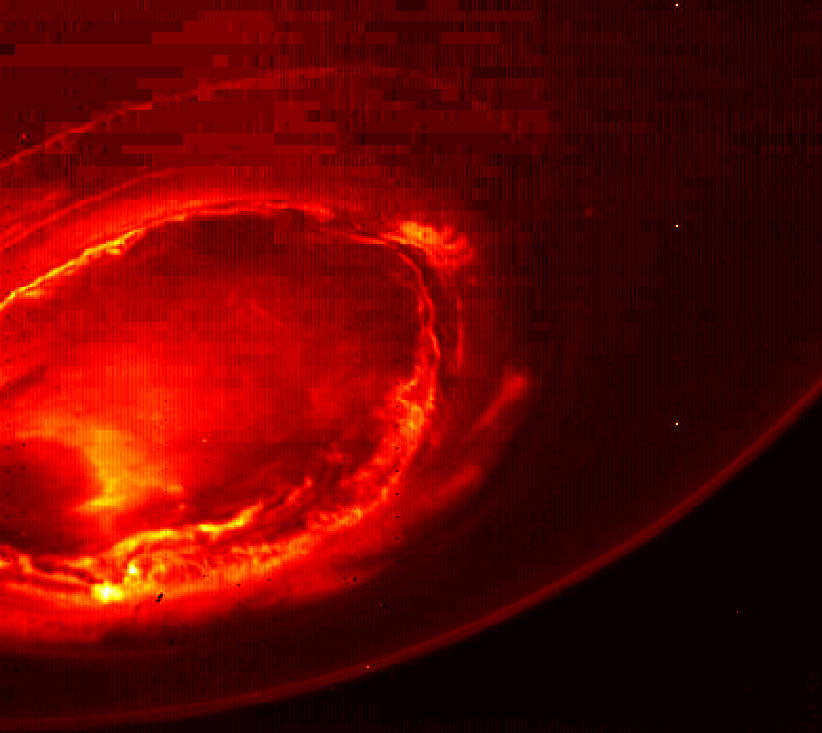
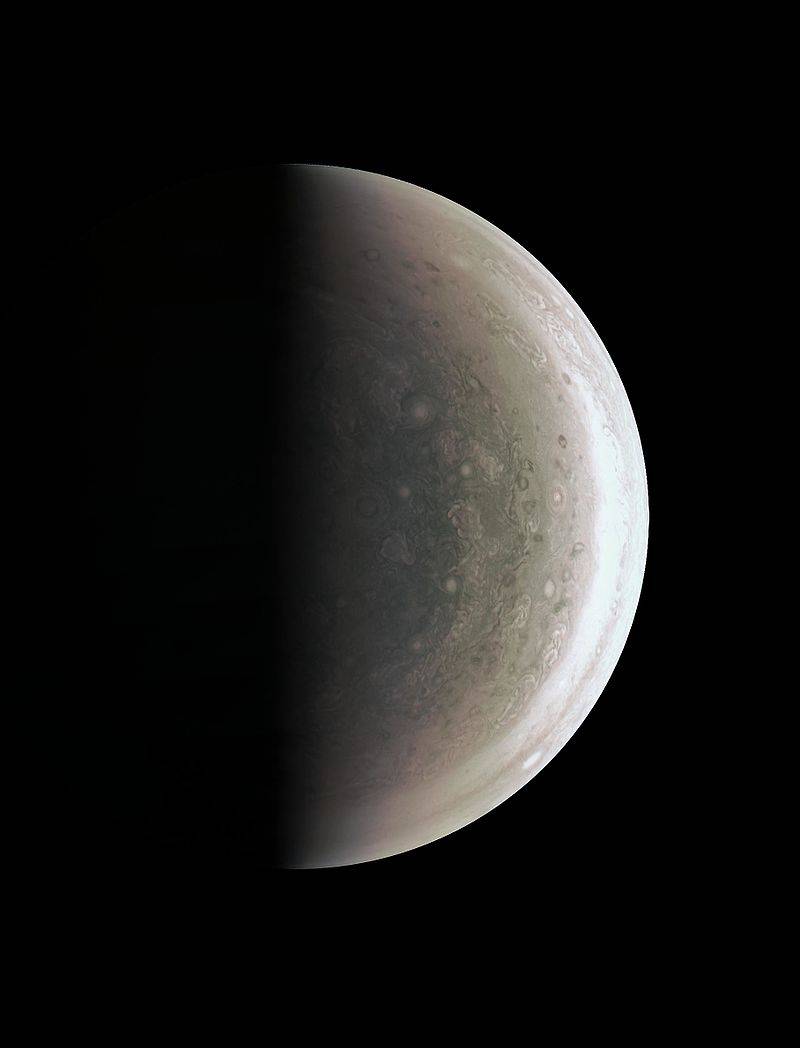
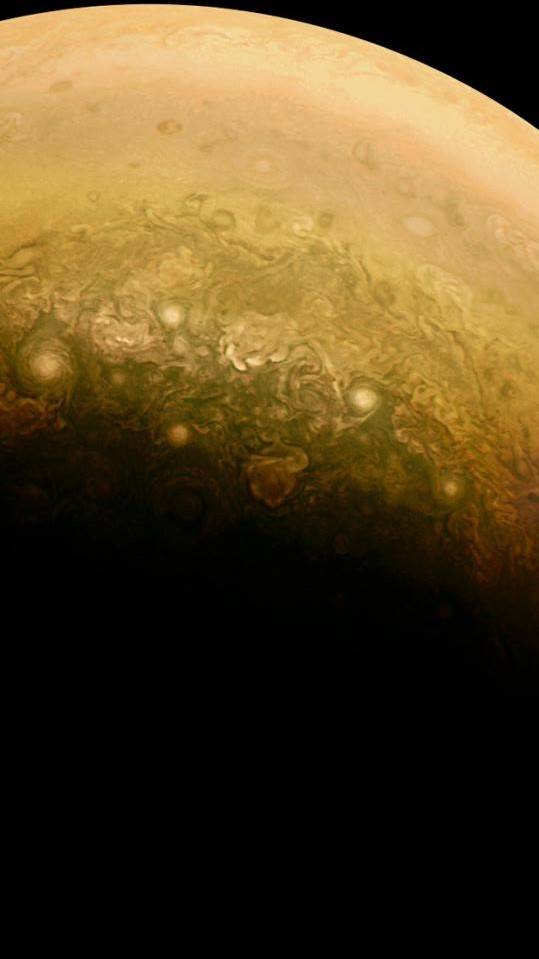
Left: Infrared image of Jupiter’s aurora australis, or southern lights, taken during the first close approach to the planet, or perijove 1, in August 2016. Middle: First view of Jupiter’s south pole from 58,700 miles during perijove 1. Right: View of cloud patterns near Jupiter’s north pole taken during perijove 7 in July 2017.
On July 4, 2016, after a five-year cruise from Earth, Juno fired its main engine for 35 minutes to enter an elliptical polar orbit around Jupiter with an initial period of 53 days. Controllers began to activate Juno’s instruments over the ensuing days and weeks. On Aug. 27, the spacecraft made its first close pass, or perijove, at 2,610 miles above Jupiter’s cloud tops with its entire suite of instruments activated. During its second close approach on Oct. 19, the spacecraft entered a safe mode due to an anomaly affecting its main engine. The anomaly prevented the firing of the main engine to change the spacecraft’s trajectory to the planned 14-day orbit for science observations. Despite this problem, Juno continued its scientific mission in the original 53-day orbit, with the main change being that closeup observations occur less frequently than anticipated. Despite the extreme radiation environment around Jupiter, especially harsh during the perijove encounters, Juno’s systems and instruments remained healthy. In June 2018, NASA extended Juno’s mission to July 2021.
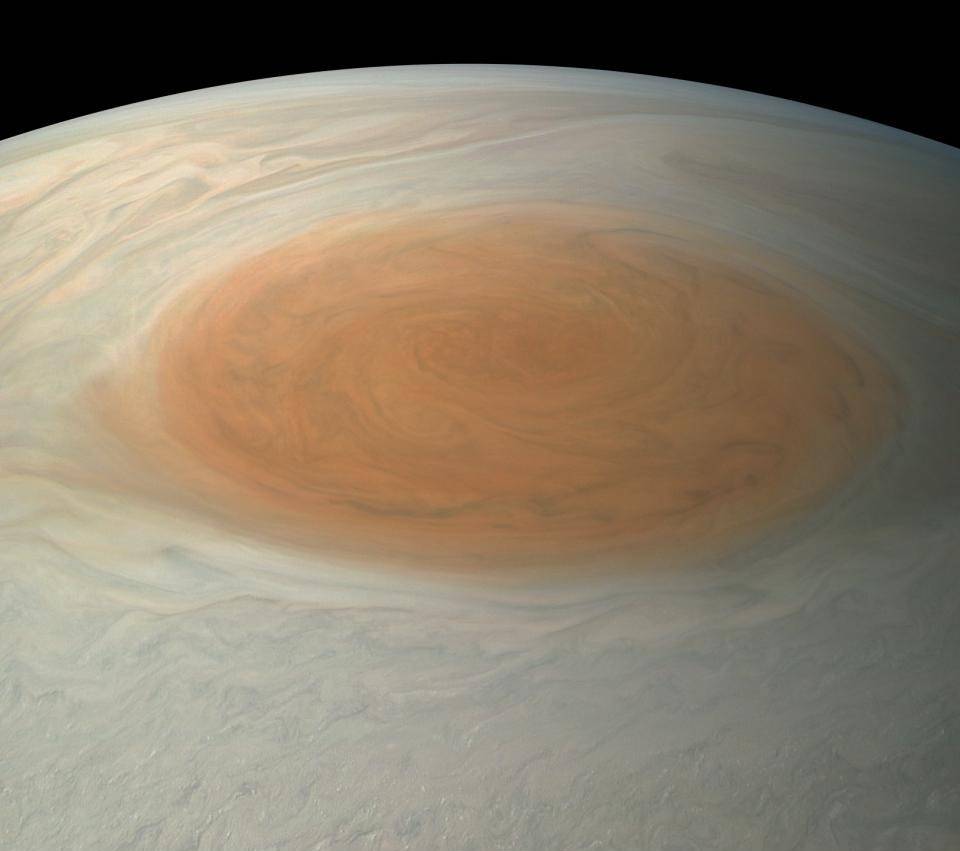
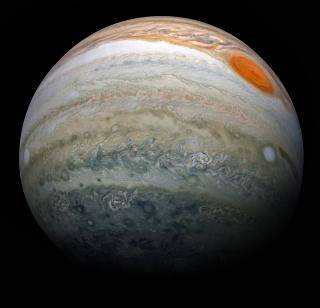
Left: True color image of Jupiter’s Great Red Spot taken during perijove 7 in July 2017. Right: Composite image showing the entire planet centered on mid-southern latitudes with the Great Red Spot visible at upper right, taken during perijove 21 in July 2019.
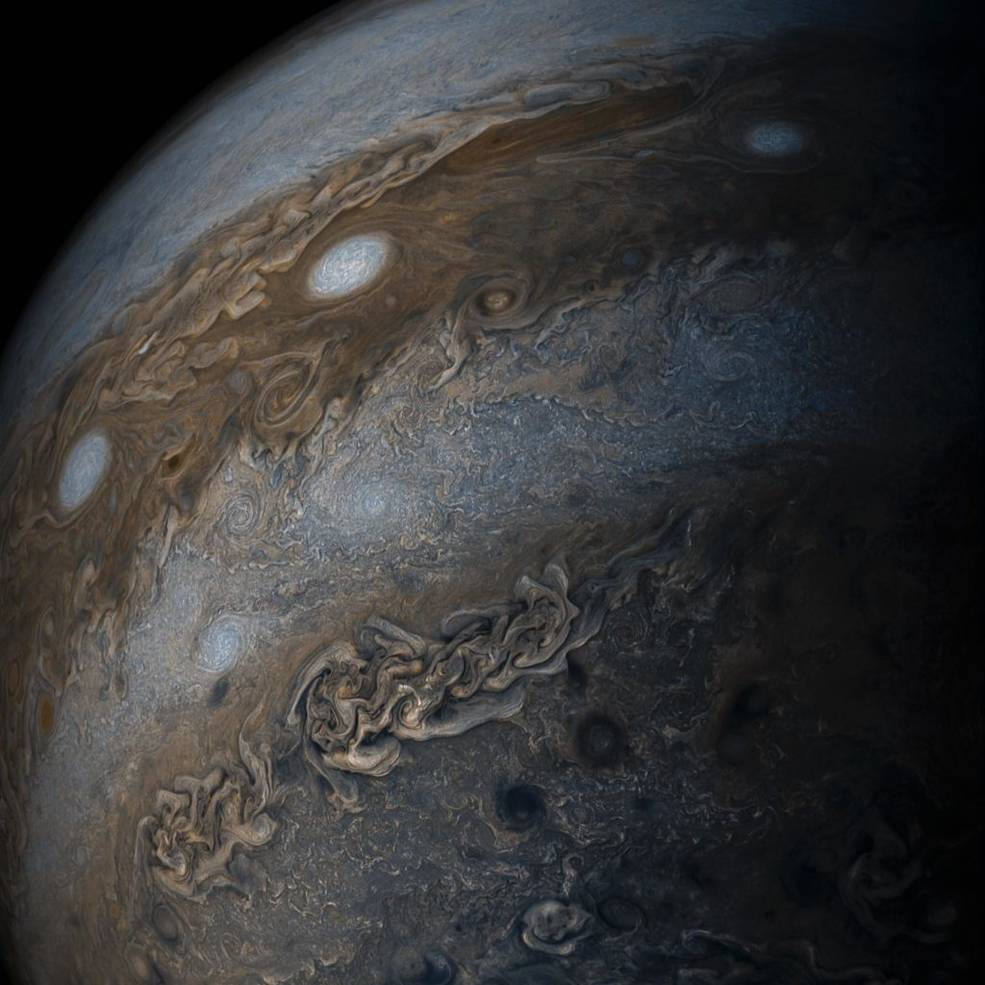
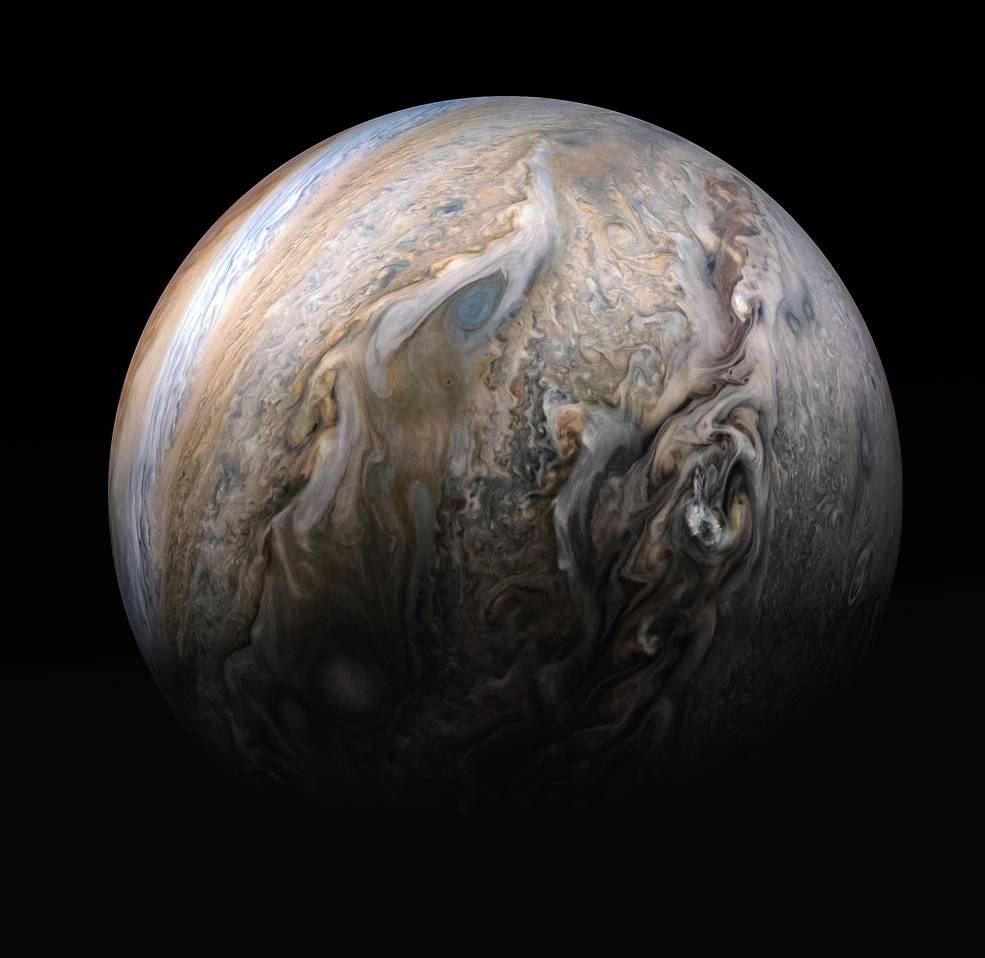
Left: String of pearls cloud formations captured by Juno during perijove 6 in May 2017. Right: Tumultuous cloud formations in Jupiter’s mid-northern latitudes during perijove 20 in May 2019.
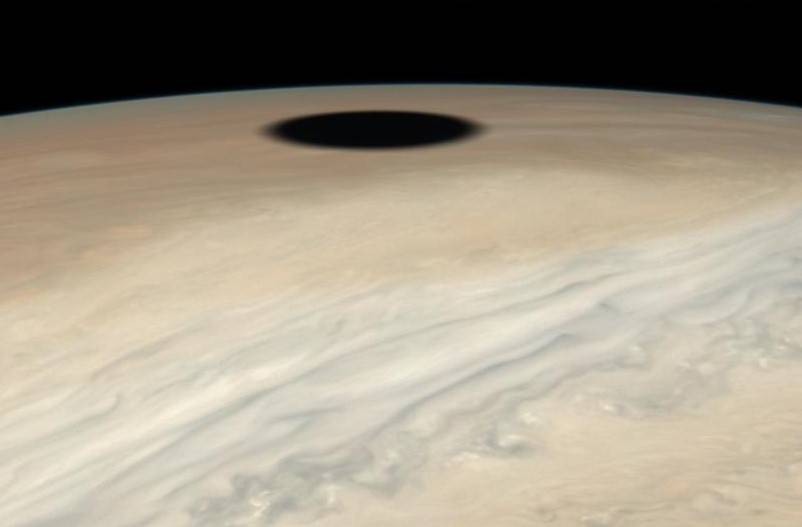
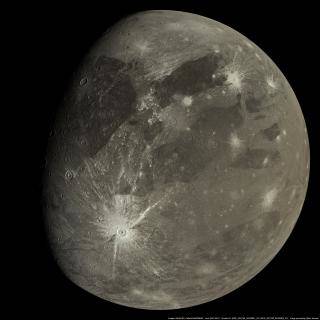
Left: Jupiter’s moon Io casting a shadow on the planet, imaged by Juno at perijove 22 in September 2019. Right: View of Jupiter’s largest moon Ganymede taken during the perijove 34 encounter in June 2021.
On June 7, 2021, during its perijove 34 encounter, Juno flew within 645 miles of Ganymede, Jupiter’s largest moon and in fact the largest moon in the solar system. It was the closest spacecraft encounter since the Galileo spacecraft flew by Ganymede in May 2000. With Juno still healthy, and to meet scientists’ request to study Jupiter’s large Moons, NASA granted a second mission extension to September 2025. Ganymede’s gravity altered Juno’s orbit, reducing its period from 53 days to 43 days and setting up a future encounter with Europa in September 2022. That flyby will reduce Juno’s orbital period to 38 days and set up encounters with Io in December 2023 and February 2024, further reducing the spacecraft’s orbital period to 33 days. Juno continues to return spectacular images of and scientific information about Jupiter and its environment.

